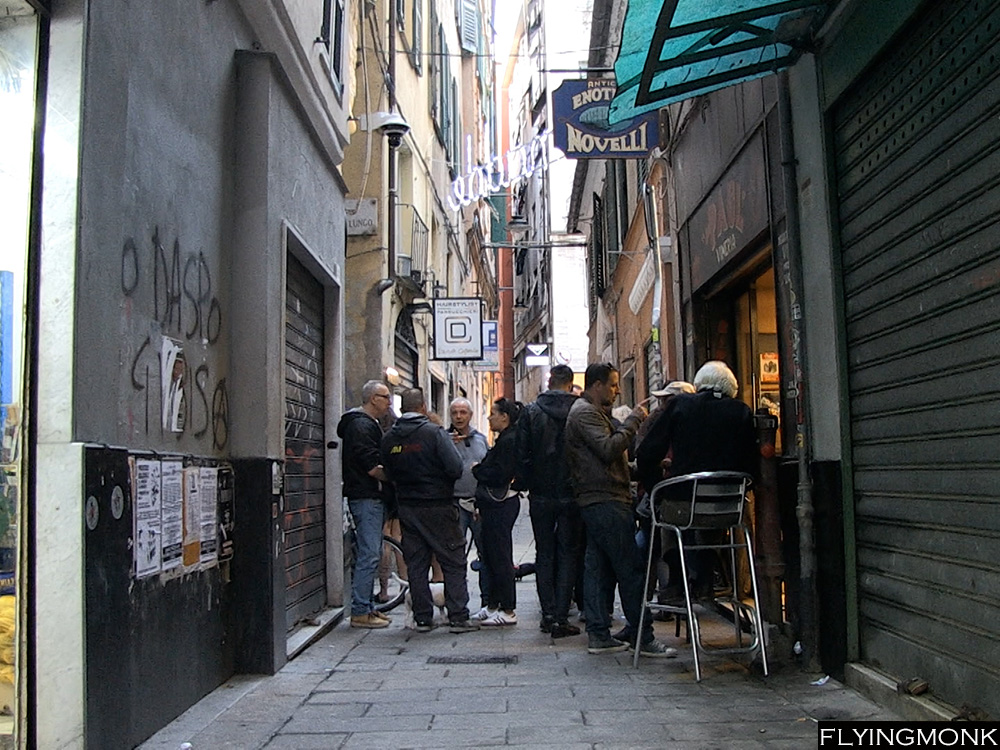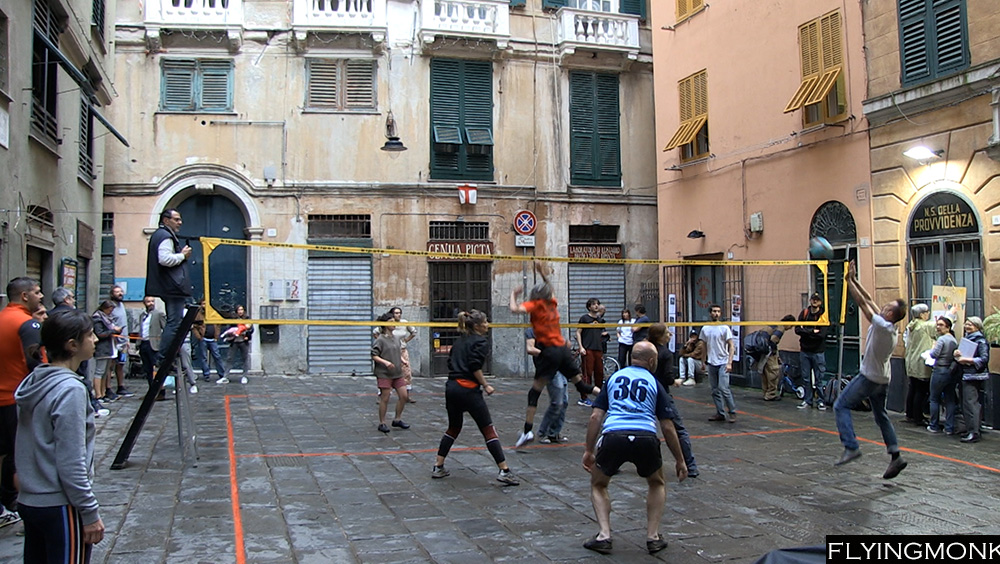
Camogli stands on Riviera de Levante that skirts the beautiful Gulf of Paradiso on the western side of a small peninsula close to Genoa. It’s a charming location that invites to explore its winding streets that start from the port and climb the hill. It looks like a small ex-fishing village turned resort with colorful buildings lining up its charming shore of pebble beaches. Its name may have come from “Casa de la Moglie”, local houses where captains used to leave their wives when they departed in long sails across the Ligurian Sea.

But the tiny town seemed to have a way larger role in history, around middle ages mooring in his harbor hundreds of Tall Ships and later hosting a contingent of the Napoleon’s fleet ready for the battle with the Brits. The main beach lined up with the colorful houses ends up dramatically with the tower of Castle della Dragonara, ruined and closed at the moment that adds to the charm of the town. On the other side of the castle is the harbor full of boats glittering in the sun.

On the other side of the peninsula, 20 minutes away of Camogli, Santa Margherita stretches along the Tigullio Gulf. Its look is more of a larger town than the village-esque looks of Camogli. Statues of Garibaldi and Columbus adorn its promenade, a charming relaxing walk of the “Pearl of Tigullio” with large yacht moored by the shore.

The entire Portofino peninsula was contested in history, Santa Margherita becaming at one point in the 18th century capital of the third canton under the French orders that included also Portofino village and its harbor.

By the thirteenth century, the small fishing village of Portofino became part of the Republic of Genoa. This move change the fortunes of the tiny forgotten village turning Portofino into a refuge for Genoese rich merchants, that brought wealth to the village, a tradition that persists even today.

But history’s fluidity made the village change hands between Florence, the local noble families and Genoa tying up Portofino in regional power dynamics. The climax came in 1814 when the small fishing village became the stage of bloody battles between English and Napoleonic troops, who were eventually driven out of the castle. The English victory incorporated Portofino into the Kingdom of Sardinia, along with the entire territory of Genoa till they all joined the kingdom of Italy.

Nowadays Portofino is a sleepy village, a retreat for the rich and famous. The road from Santa Margherita to Portofino, a 5 km stretch of narrow winding asphalt band is paced daily by crowds of tourists that enjoy the walk shared precariously by both humans and vehicles with no separation in between. Cars are parked occasionally on the side of the road avoiding to enter Portofino where parking is scarce. In town more upscale restaurants line up the charming harbor overlooked from the the top of the rock by Brown Castle that confer great views over the the colorful houses that embrace the harbor. Cruises sail at sunset from the harbor connecting the villages of the peninsula and Fruttoso Monastery located close to the promontory that has at its tip a romantic lighthouse.















You must be logged in to post a comment.